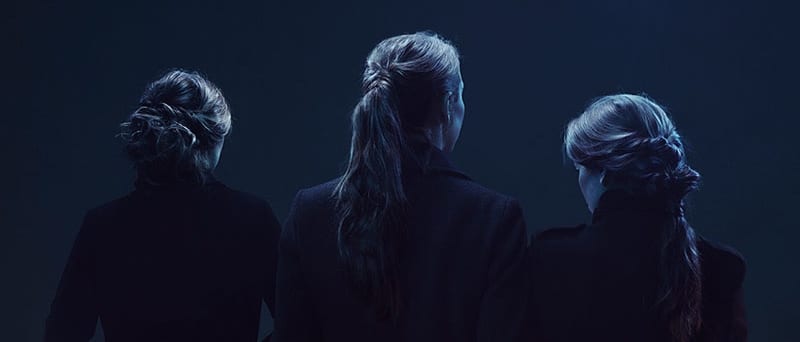What a pity that ENO did not decide to call this opera simply The Women of Whitechapel and leave the name of a serial killer out of the title. All their promotion of the opera has concentrated quite rightly on the admirable intention of Iain Bell and Emma Jenkins to tell the stories of the women who lived in the slums of Whitechapel and whose lives of suffering and bravery have gone unnoticed in the dark shadow of their gruesome deaths. What a pity that someone decided that the murderer’s name should get another burst of publicity – even more so when the opera revolves around a stellar cast of some of the finest British female singers. But reservations aside, while the opera as a whole is only a partial success, ENO deserves real credit for commissioning an ambitious and serious work of music drama.
The story is focussed on Mary, who lives in a doss house with her mute daughter Magpie. She lives cheek by jowl with other women, some of them so poor – or so addicted to gin – that selling sex to local men is their main source of income. Catherine and Liz have found a rich man who pays them well for posing for lurid photographs. We meet Maud, who perhaps runs the doss house, and it becomes clear that, besides carrying out abortions, she is willing to sell underage girls to rich men. When news of the first murder is announced by a police sergeant, who asks three of the women to go to identify the body, a climate of fear begins to develop. A writer asks to live in the house so he can learn about the women and raise public awareness of their conditions but he ends up fanning the flames of a brutal vigilante group. Three more of the women are murdered and, as Magpie escapes, the darkness finally consumes Mary.
Surrounded by some of the best singers in the land, Natalya Romaniw as Mary is still outstanding. Her ability to shift her fine soprano voice through a gamut of challenges, both musical and emotional, from tormented mother to brave defiance of male violence marks this out as a special performance. And alongside her, in a set of strong female roles ranging from tragic to semi-comic, she has the extraordinary quartet of Janis Kelly, Marie McLaughlin, Susan Bullock and Lesley Garrett. No space to do full justice to all of them but amongst the highlights is a foul-mouthed comic duet between Garrett and Bullock as they laugh about the sad photographer’s strange tastes. And Josephine Barstow wrings every chilling moment of pathos out of her turn as Maud – the voice is very different now but the core of steel behind it serves the role well. There are fine performances from Alan Opie as the pathologist and Alex Otterburn as Mary’s doomed admirer, Squibby, but this is an opera that puts women in every way at the forefront and there are moments when it seems that Bell really does have the musical sensibility to offer the female voice music of the highest quality … but then again there are moments when that power seems to desert him.
The set – until the very final scene – offers powerful visual images that serve the task of telling the story very well. The doss house with its coffin-like beds and the endless doors and observation hatches, that emphasise that these women are at the mercy of the male gaze, works well. The public house scene – where a riotous drunken waltz knees-up takes place – is conjured up by an enormous screen that looks like the sort of glass divider that we used to see on Victorian pubs. The direction by Daniel Kramer for the most part works well – and the decision to avoid depicting the killer’s violence and leave it to the libretto to explain to us precisely what is going on is welcome. Just occasionally visual clichés slip in – no more stove pipe hats please! And the final scene takes us out of the real world to somewhere else – a hearse carriage without the horses set against a luminous sky perhaps – and adds nothing to the story or to the librettist’s evident intention to portray the defiance of Mary in the face of the many forms that violence against women took in Victorian England.
It is good to see ENO devoting major resources to a new opera on such a serious theme. Whilst it is not a thorough-going success, it has lots of good moments and the cast alone is sufficient reason to buy a ticket. But please change the title for the first revival.

